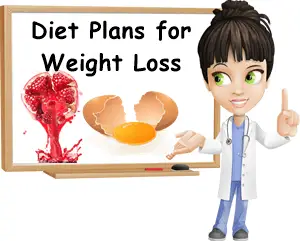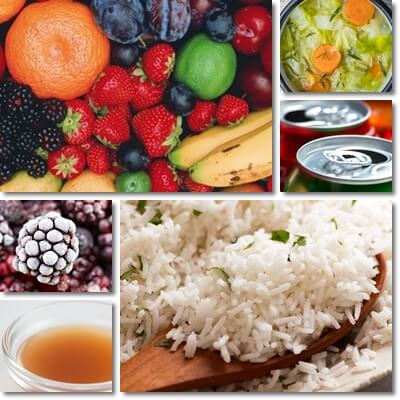Most people you and I know have tried to diet at one point or another in their life, whether it was to lose weight or be healthier, or both. Some people more than once. Approaches to losing weight and getting healthier can vary significantly. Some people try to eat less overall. Some switch to eating cleaner, like no more processed foods, or cooking at home more often. Some cut down on specific foods or treats like junk food. Some substitute less healthy or too caloric foods with others that are healthier or lower calorie.
Some go vegetarian. Some fruitarian. Some pick protein over carbs, or vice versa.
There isn’t just one solution to dieting, whether it’s a weight loss diet or a diet that’s meant to make you healthier and feel better physically and mentally. Of all the different approaches, most produce results, and if the diet plan is continued long-term, the results can also be maintained long-term, for the most part. Essentially, a diet, any diet, has to become a lifestyle if the weight loss and benefits for health are to be maintained in the future.
Discover what are the most common approaches to dieting and which diet plans are good to consider for weight loss and general health.

Top 10 Diet Plans explained
#1 Hypocaloric diet
The hypocaloric diet is also colloquially called the low calorie diet. It is one of the simplest, most effective ways to lose weight. With the hypocaloric diet you can lose weight at a steady, predictable rate, and often times eat a wide variety of foods and meals. The hypocaloric diet does not exclude any food. The basic principle of the hypocaloric diet is to eat a certain number of calories a day, under your daily energy requirements by a few hundred calories.
The most common recommendation for a hypocaloric diet is 1200 to 1400 or 1450 calories (or kilocalories) a day, and you have to count calories.
Most other diet plans are based on the hypocaloric diet to some extent, requiring some form of calorie restriction. For example, the popular intermittent fasting diet plan is based on two principles:
- a specific schedule of eating that includes windows of time when eating is allowed followed by voluntary fasting which can last for hours or days
- calorie restriction

#2 Very low calorie diet
The very low calorie diet is an extension of the hypocaloric diet. The very low calorie diet means eating very few calories a day, often just 1000 or 800 calories per day. The very low calorie diet is essentially a crash diet, that is, a diet that is abnormally low in calories, but usually meant for a limited amount of time. Some dietitians and nutritionists recommend going on a very low calorie diet for the first month or first two months of a lengthier dietary regimen.
This is done for two reasons: to cause a rapid and very significant weight loss in the beginning, and to serve as motivation for people who have difficulty sticking to a diet, but have a lot of weight to lose.
All foods may be permitted so long as the recommended calorie intake is not exceeded, or just a few types or classes of food, or just one food.
Side effects will include hunger, stomach pain, stomach cramps, potentially also burping and an increase in acid reflux or gastritis symptoms in those with preexisting conditions. Other side effects: irritability, anger, low mood, anxiety, higher stress levels, poor concentration, low motivation, tiredness, difficulty sleeping or excess sleepiness, lethargy, low productivity.
#3 Low-carb diet
The low carb diet is a diet plan fixating on one non-negotiable rule: eating fewer to very few carbohydrates. Usually the low carb diet excludes simple carbohydrates that come from refined grains, sugar and home made and processed foods made with refined grains and simple sugars, or other sweeteners that are naturally high carb, including honey and maple syrup.
General principles of the low carb diet:
- Consuming fewer carbohydrates than normal – this varies with person, subtype of diet, objectives, weight loss intentions and other factors.
- Drastically reducing or even excluding simple carbohydrates such as sugar, pasta, bread, rice, and home made and processed foods high in simple carbohydrates.
- Excluding certain fruits from the diet, limiting overall fruit intake to very low amounts.
- Getting your carbohydrates from vegetables and limited amounts of whole grains.
- Increasing protein and/or fat intake.
- Calorie restriction – reducing calorie intake for weight loss.
When practiced in a feasible and moderate manner, the low carb diet can be healthy. Reducing the intake of refined grains and simple sugar is good for health, especially for those with high blood sugar, diabetes and inflammatory conditions. But complete exclusion or severe reduction of simpler carbohydrates is not.
Side effects of the low carb diet:
- Limited food choice which deters long-term adherence.
- Bread, rice, pasta, cakes, cookies, candy, cereal, pastry, even corn, corn flour, other grains and byproducts, potatoes and carrots may be excluded or limited severely.
- Drastic reduction in carbohydrate intake which negatively impacts metabolism and energy levels.
- Reducing carbohydrates as a macro-nutrient means increasing protein and fat in the diet which can be dangerous for health, including liver, kidney and cardiovascular side effects.
- The diet plan is high in animal foods which increases overall risks of mortality with long and very long term use.
- There is no clear recommendation with regards to a healthy carbohydrate intake – low carb diets may recommend anywhere from 20 to 60 g of carbs per day or 20% to 40% of total calorie intake.
A low carb diet is often synonymous with a high protein-high fat diet.
#4 High protein (high fat) diet
A high protein diet is a diet focusing on the intake of high amounts of protein, and limited amounts of carbohydrates for balance, coming primarily from non-starchy, mostly leafy vegetables as sources of complex carbohydrates and dietary fiber. Both animal protein and plant protein are favored, including: poultry, red meat, game, cheeses, dairy milk, sour cream, eggs, fish and shellfish, but also nuts, seeds and nut and seed flours as well as fats such as cooking oils, mayonnaise and butter.
Fruits and starchy vegetables such as potatoes, but also carrots and other root vegetables are avoided, while legumes consumed in certain phases of the diet or in specific amounts, depending on the type of diet. High protein diets are almost always, in practice, also high fat due to the fact that more than half the diet consists of animal foods, nuts and seeds which are naturally high in fat.
Vegetable intake is insufficient to provide a real balance in the diet. High protein diets that do not include calorie restriction often cause some degree of weight gain, while those that do include calorie restriction result in spectacular weight loss. The side effects are the same as in low-carb diets.
#5 Dissociated diet
A dissociated diet is a diet that dissociates, or separates foods. Various types of the dissociated diet exist, but the most common type is the one focused on dissociating protein and carbs, meaning you never eat protein with carbs from grains or starchy vegetables or fruits at the same meal (bread, pasta, rice, potatoes, cassava, yams, Chinese yams, taro, plantains, bananas).
A dissociated diet can focus on one food class per meal or per day. For example, it’s common for people on a dissociated diet to eat fruit one day, vegetables another, dairy the next, legumes following that and then meat, usually paired some low-carb vegetables. If managed properly so that it includes all macro and micronutrients, a dissociated diet can constitute a healthy diet. If calorie restriction is applied, weight loss will also occur.
#6 Clean diet
There’s no official definition for a clean diet, so people often make their own clean diets based on what they consider to be clean food or clean eating. For some people, a clean diet may mean eating no processed foods and preparing or cooking everything they eat themselves, from scratch, at home, avoiding complex dishes that emulate processed foods. There are however some diet plans that are considered clean, such as the macrobiotic diet, the locally sourced food diet, the seasonal and local food diet etc.
#7 Vegetarian diet
The vegetarian diet is a particular type of diet, classified as a health-oriented, but also ideological diet rooted in ethical motivations. Generally, vegetarians will consume both animal and plant foods, including milk, dairy, eggs, honey, fruits, vegetables, nuts, seeds. There are several approaches to vegetarianism:
- General vegetarianism: excludes all meat, except for fish, and byproducts of meat processing such as gelatin, and allows eggs, milk, dairy.
- Ovo-lacto vegetarianism: focused on eggs and dairy consumption.
- Ovo-vegetarianism: focused on eggs consumption, but excludes milk and dairy.
- Pescatarian diet: includes fish in addition to eggs, milk and dairy.
- Veganism: excludes all animal foods and byproducts – no meat, no fish, no eggs, no milk, no dairy.
- Fruitarianism: exclusive consumption of fruits.
Vegetarianism is a good diet for losing excess weight. Reducing intake of animal foods also automatically reduces fat and calorie intake. If eating is balanced, focused on vegetables rather than grains, with limited amounts of cheese, butter and eggs, weight loss is likely to occur naturally.
Note: Veganism is also classified as a diet of its own, nut subordinate to vegetarianism. Fruitarianism is a sub-type of vegan diet. Both vegans and fruitarians need vitamin B12 supplements.
#8 Non-vegetarian diets
These include the omnivorous and carnivorous diet. The first consists of consumption of both plant and animal based foods in various ratios, while the second focuses primarily on consumption of meat, although small amounts of other foods are permitted and usually also consumed. The omnivorous diet can be one of the healthiest and most sustainable diets if plant foods are consumed in larger amounts than animal foods and clean eating is practiced. And if the diet is also hypocaloric, then sustainable weight loss can occur.
The carnivorous diet is akin high-protein, high-fat diets.
#9 Food focused diet
Food focused diets are typically fad diets. While popular to the point of no return, they are often unsustainable long-term, negatively affect digestive system health, and have the biggest bounce-back rates. However, food focused diets help you achieve extreme weight loss in very short amounts of time, albeit unsustainable.
Examples of food focused diets: the lemon diet, the lemon water diet, the vinegar on an empty stomach diet, the cabbage soup diet, even the fruitarian diet when used in this way, the activated charcoal diet, the wheatgrass diet, the cotton ball diet, the rice diet, the banana diet, the apple diet, the soda diet and more.
#10 Juicing
Juicing in itself is a diet. It is done for the purpose of detoxification, although it merely achieves a purgative effect with no real or lasting benefits for health. It is also done for the purpose of losing weight, although the weight comes back once the diet is discontinued. Juicing by itself is more of a fad diet, unless done in a medical setting with clear medical indications.
Juices are hydrating, but not satiating. While juicing gives the impression of clean eating, foods are usually from commercial production where pesticides and insecticides are used extensively and intensively. Even organic-certified foods contain pesticides and insecticides. Also, juicing raises blood sugar levels and causes blood sugar to come back crashing down soon after eating, resulting in hunger, low blood sugar, weakness, low energy, headaches and other side effects.
